What is Blanc de Chine or Dehua porcelain?
Blanc de Chine is French for “white from China”. This name was given to it because the figurines are made of a milky white porcelain. They are figurines of religious figures from Buddhism and Taoism. They are often highly detailed in design and usually have a calm, elegant pose.
Dehua porcelain refers to the area where the figurines come from. Dehua is a district in the Fujian province in southern China. This area is rich in kaolin, a white clay used for the porcelain. This is also the reason why a lot of pottery is made in the area.

An immortal figure.
From past to present
Blanc de Chine figurines have been made since the late Song Dynasty (960-1279), but became popular during the Ming Dynasty (1368-1644). Chinese craftsmen still make the figurines today, and are still using traditional techniques. However, production today has been scaled down compared to the past. The figurines are made for both religious and decorative purposes.
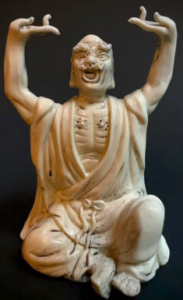
Another immortal.
Figures
Eight Immortals (Taoism)
Dehua porcelain figures often represent the Eight Immortals (xian) from Taoism (Daoism). These are beings with supernatural powers, who do not die. They have a connection to the heavenly realms.
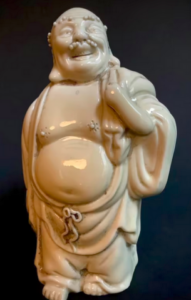
The laughing buddha.
Each immortal possesses a unique power that can be channeled into a sacred vessel (法器 or fǎqì. The sacred vessel acts as a spiritual tool with which the immortal can direct and control his power. These powers often create life or overcome evil.
The powers they can share often have to do with blessings, protection, wisdom, good fortune or health.
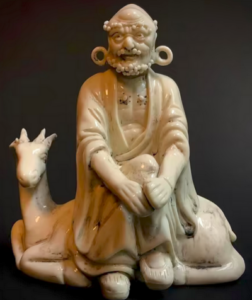
An immortal on a goat.
Guanyin (Buddhism)
You also often see the Guanyin (觀音). The Guanyin (also written as Guan Yin) is a bodhisattva associated with comfort, mercy and compassion. Bodhisattvas are enlightened beings who delay their own path to nirvana in order to help beings on earth be able to achieve it as well. The Guanyin is an important figure in Chinese Buddhism, and she is worshipped by people in times of fear or uncertainty.
In addition to these religious figures, utensils are also made from Dehua porcelain, such as bowls, teapots and incense holders. We will not discuss these further in this article.
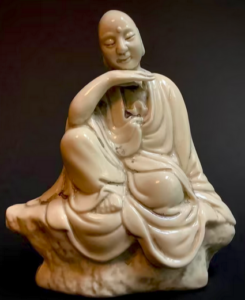
A monk.
Stamps and collectors
Collectors of these figurines often pay attention to the stamps on the back. This is for a number of reasons.
Certain marks are associated with specific periods, dynasties or famous kilns, allowing collectors and experts to identify and date the piece. This can help them to find out if the piece is authentic and of good quality, or where exactly it came from.
Usually, a craftsman uses his personal stamp, which allows you to find out who made the figurine. Being able to find out this information can increase the value of the figure.

Example of a stamp.
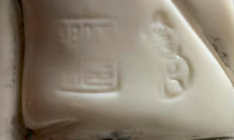
Another example of a stamp
Rootz Gallery Collection
Rootz Gallery has an extensive collection of Blanc de Chine figurines. The images you see in this article are just a sample of our collection. If you are looking for a specific figurine, or want to know more? Feel free to send us a message (phone +31 6 55834611 or email info@rootz.gallery).
We also have a number of figurines on our website.
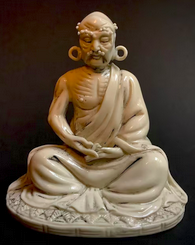
A meditating immortal.
